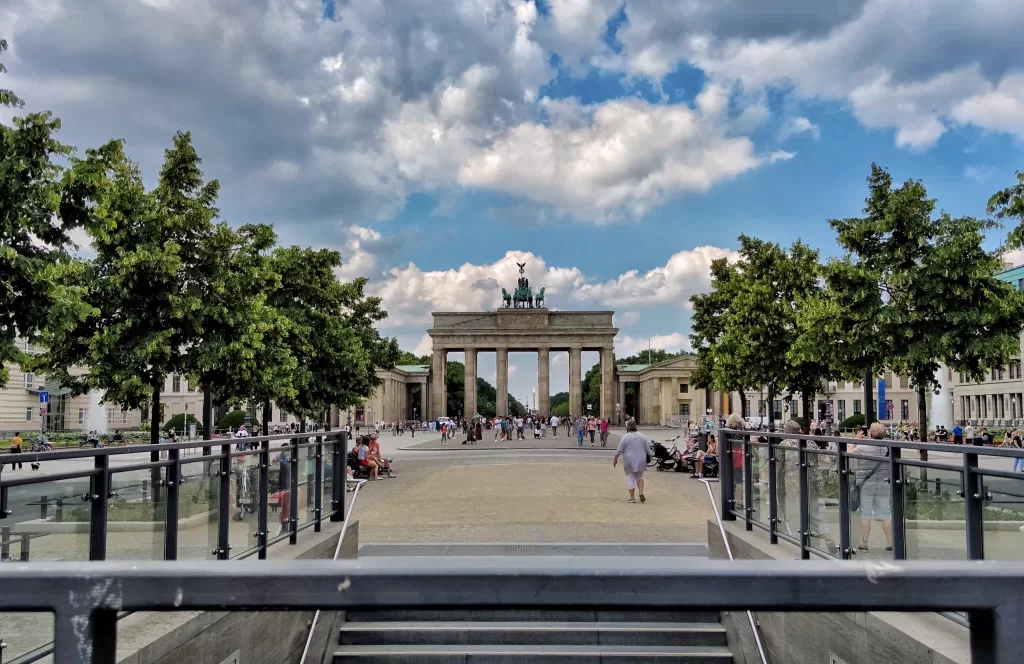 Preface: Welcome to one of my Short City Adventures. These are shorter not due to any lack of affection for the featured locations, but because the visits were either brief, offering just a glimpse of the city, or because the cities only have a handful of attractions. Join me and discover whether these cities might interest you.
Preface: Welcome to one of my Short City Adventures. These are shorter not due to any lack of affection for the featured locations, but because the visits were either brief, offering just a glimpse of the city, or because the cities only have a handful of attractions. Join me and discover whether these cities might interest you.
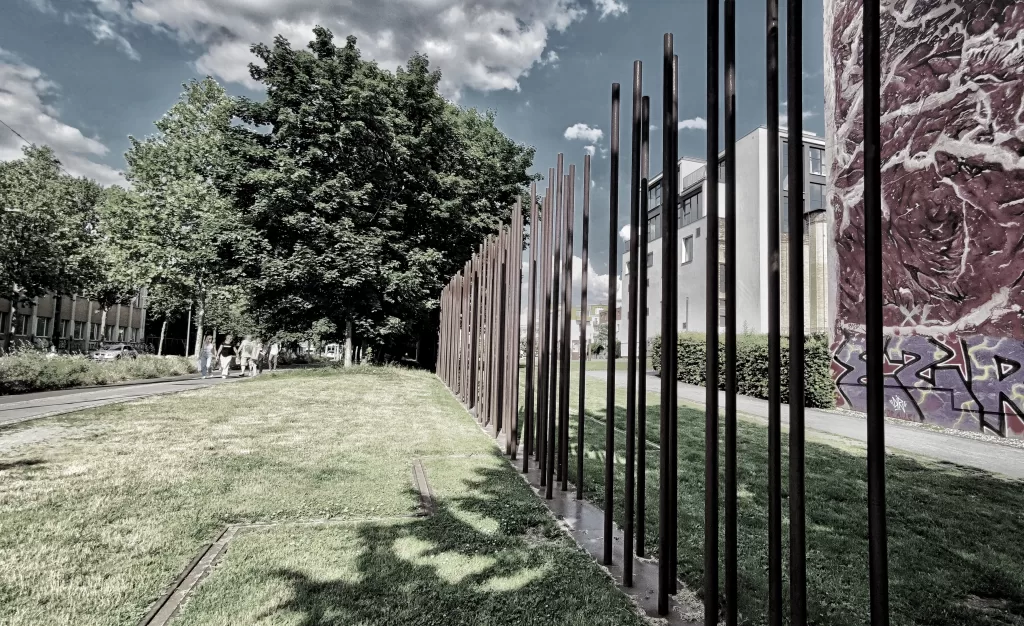 Berlin – what comes to mind when you think of it? The capital of Germany? War ruins? Or a modern, dynamic, diverse city? I can’t find one word to encapsulate Berlin’s complexity. It has much to offer and much to process. If I had to introduce Berlin, I’d call it a city where rainbows are painted on a canvas of gray.
Berlin – what comes to mind when you think of it? The capital of Germany? War ruins? Or a modern, dynamic, diverse city? I can’t find one word to encapsulate Berlin’s complexity. It has much to offer and much to process. If I had to introduce Berlin, I’d call it a city where rainbows are painted on a canvas of gray.
My feelings toward Berlin are complex. As a liberal arts student in high school, I learned extensively about the city’s crucial role during World War II. It was the heart of the Nazi regime, suffered devastating bombings, was carved into sectors by occupying forces, and ultimately witnessed the reunification of its people. With such a loaded history, it’s a favorite destination among my history-loving friends. Their stories aroused my curiosity, and I decided to visit Berlin myself.
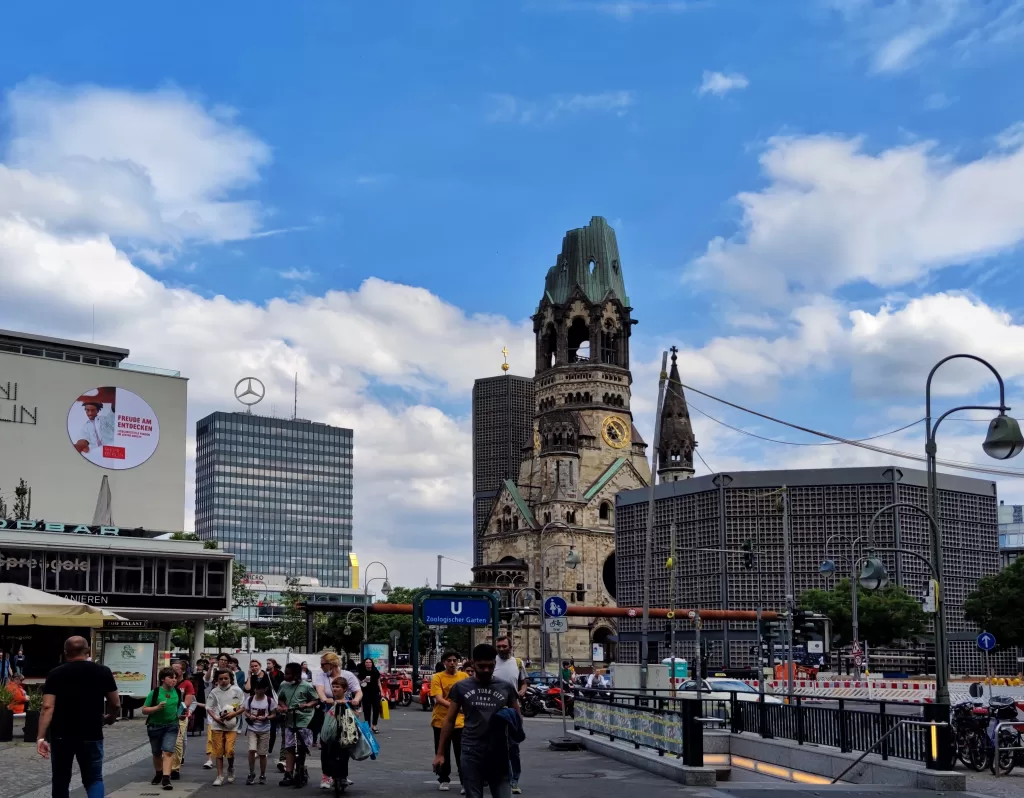 Stepping off the train at Berlin Hbf, I could tell that this city was different from others in Germany. The huge, multi-level glass train station doesn’t exist elsewhere in Europe. Berlin feels modern, mostly rebuilt after the war with only a few historical pieces left scattered around. Modern statues and architecture caught my eye throughout the city. I was struck by the Kaiser-Wilhelm-Gedächtniskirche, a church damaged in the war
Stepping off the train at Berlin Hbf, I could tell that this city was different from others in Germany. The huge, multi-level glass train station doesn’t exist elsewhere in Europe. Berlin feels modern, mostly rebuilt after the war with only a few historical pieces left scattered around. Modern statues and architecture caught my eye throughout the city. I was struck by the Kaiser-Wilhelm-Gedächtniskirche, a church damaged in the war 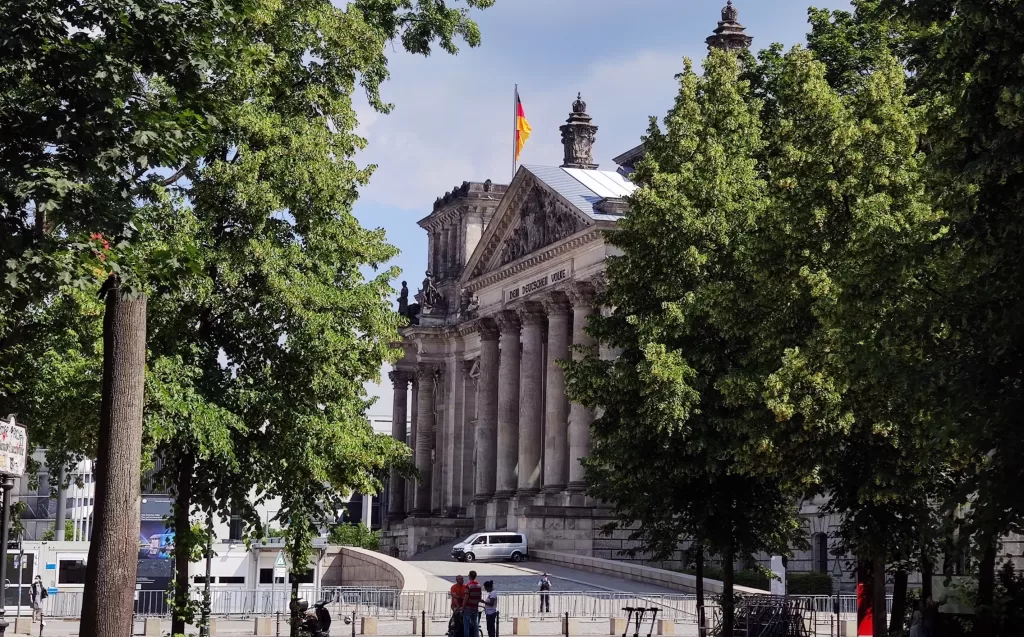 but now accompanied by a new church built by the German architect Egon Eiermann and the French glass artist Gabriel Loire, right by our hotel near the Zoo. And, of course, no one should miss sites like Denkmal für die ermordeten Juden Europas (Memorial to the Murdered Jews of Europe), Reichstag and Bundestag, Brandenburger Tor, and the Berlin Wall.
but now accompanied by a new church built by the German architect Egon Eiermann and the French glass artist Gabriel Loire, right by our hotel near the Zoo. And, of course, no one should miss sites like Denkmal für die ermordeten Juden Europas (Memorial to the Murdered Jews of Europe), Reichstag and Bundestag, Brandenburger Tor, and the Berlin Wall.
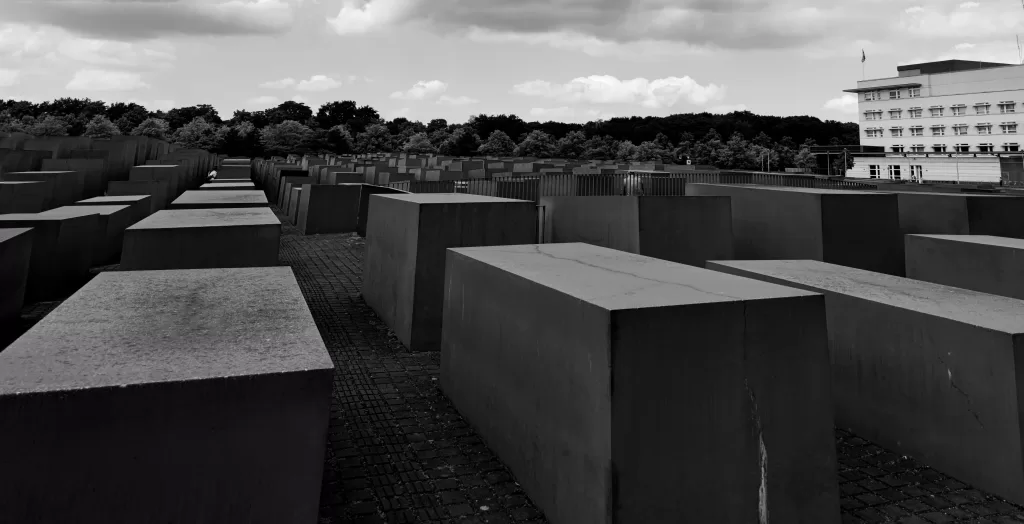
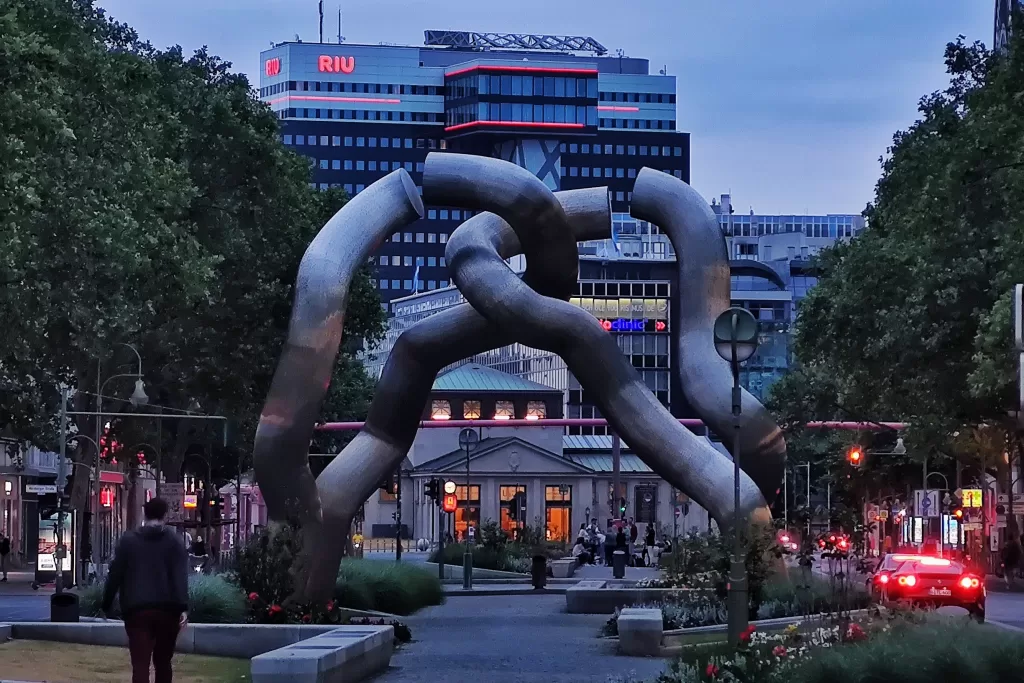 Berlin has come a long way from its past. I haven’t been to Amsterdam, but I’d say Berlin is one of the most dynamic and multicultural cities in Europe, more so than Paris. Its inclusiveness made me feel welcome and safe. English is widely spoken, and no matter your background or minority status, you feel free here. Berlin has outshone Cologne to become the capital of the LGBTQ+ community. There’s no need to wait for Christopher Street Day to celebrate: the city is full of LGBTQ+ exhibitions, clubs, and activities year-round.
Berlin has come a long way from its past. I haven’t been to Amsterdam, but I’d say Berlin is one of the most dynamic and multicultural cities in Europe, more so than Paris. Its inclusiveness made me feel welcome and safe. English is widely spoken, and no matter your background or minority status, you feel free here. Berlin has outshone Cologne to become the capital of the LGBTQ+ community. There’s no need to wait for Christopher Street Day to celebrate: the city is full of LGBTQ+ exhibitions, clubs, and activities year-round. 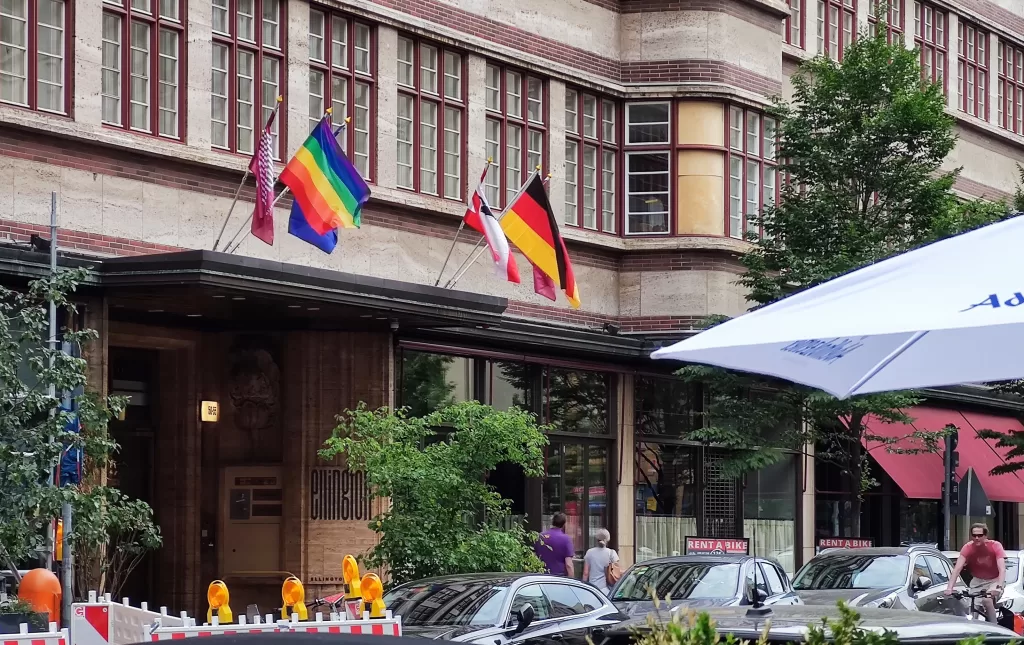 There are also LGBTQ+ friendly streets and hotels that provide a secure space to fully embrace who you are. For more on Berlin as an LGBTQ+ capital, take a look at the Guide for LGBTQ+ in Berlin. Besides, Berlin is bursting with museums, exhibitions, theaters, and cultural events. Just the fact that the city has a Museum Island and nearly 200 museums speaks volumes! You can find all this information with a quick search on Google Maps and the Berlin Official Website.
There are also LGBTQ+ friendly streets and hotels that provide a secure space to fully embrace who you are. For more on Berlin as an LGBTQ+ capital, take a look at the Guide for LGBTQ+ in Berlin. Besides, Berlin is bursting with museums, exhibitions, theaters, and cultural events. Just the fact that the city has a Museum Island and nearly 200 museums speaks volumes! You can find all this information with a quick search on Google Maps and the Berlin Official Website.
Berlin is a city layered with history and alive with energy – a few days are just a glimpse of its depth. Leaving after such a brief introduction, I felt the desire to return, to dive deeper into its rich past and vibrant streets. Berlin isn’t just a destination, it’s an experience that calls for repeated exploration, promising new discoveries with every visit.
Berlin: Where History Meets Diversity
Preface: Welcome to one of my Short City Adventures. These are shorter not due to any lack of affection for the featured locations, but because the visits were either brief, offering just a glimpse of the city, or because the cities only have a handful of attractions. Join me and discover whether these cities might interest you.

Berlin – what comes to mind when you think of it? The capital of Germany? War ruins? Or a modern, dynamic, diverse city? I can’t find one word to encapsulate Berlin’s complexity. It has much to offer and much to process. If I had to introduce Berlin, I’d call it a city where rainbows are painted on a canvas of gray.

My feelings toward Berlin are complex. As a liberal arts student in high school, I learned extensively about the city’s crucial role during World War II. It was the heart of the Nazi regime, suffered devastating bombings, was carved into sectors by occupying forces, and ultimately witnessed the reunification of its people. With such a loaded history, it’s a favorite destination among my history-loving friends. Their stories aroused my curiosity, and I decided to visit Berlin myself.
Stepping off the train at Berlin Hbf, I could tell that this city was different from others in Germany. The huge, multi-level glass train station doesn’t exist elsewhere in Europe. Berlin feels modern, mostly rebuilt after the war with only a few historical pieces left scattered around. Modern statues and architecture caught my eye throughout the city. I was struck by the Kaiser-Wilhelm-Gedächtniskirche, a church damaged in the war but now accompanied by a new church built by the German architect Egon Eiermann and the French glass artist Gabriel Loire, right by our hotel near the Zoo.

And, of course, no one should miss sites like Denkmal für die ermordeten Juden Europas (Memorial to the Murdered Jews of Europe), Reichstag and Bundestag, Brandenburger Tor, and the Berlin Wall.


Berlin has come a long way from its past. I haven’t been to Amsterdam, but I’d say Berlin is one of the most dynamic and multicultural cities in Europe, more so than Paris. Its inclusiveness made me feel welcome and safe. English is widely spoken, and no matter your background or minority status, you feel free here. Berlin has outshone Cologne to become the capital of the LGBTQ+ community.

There’s no need to wait for Christopher Street Day to celebrate: the city is full of LGBTQ+ exhibitions, clubs, and activities year-round. There are also LGBTQ+ friendly streets and hotels that provide a secure space to fully embrace who you are. For more on Berlin as an LGBTQ+ capital, take a look at the Guide for LGBTQ+ in Berlin. Besides, Berlin is bursting with museums, exhibitions, theaters, and cultural events. Just the fact that the city has a Museum Island and nearly 200 museums speaks volumes! You can find all this information with a quick search on Google Maps and the Berlin Official Website.

Berlin is a city layered with history and alive with energy – a few days are just a glimpse of its depth. Leaving after such a brief introduction, I felt the desire to return, to dive deeper into its rich past and vibrant streets. Berlin isn’t just a destination, it’s an experience that calls for repeated exploration, promising new discoveries with every visit.